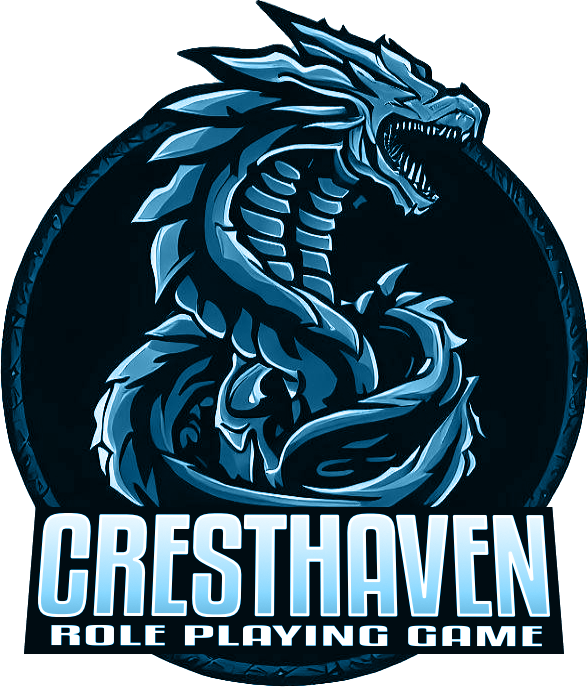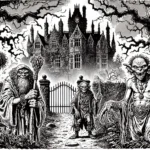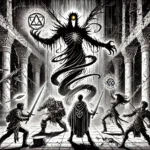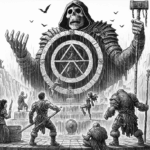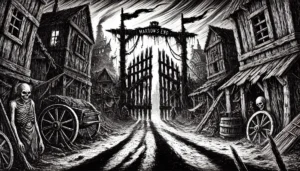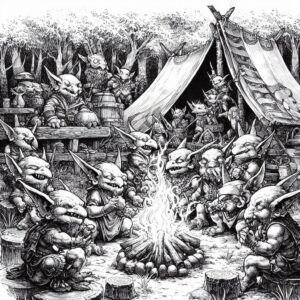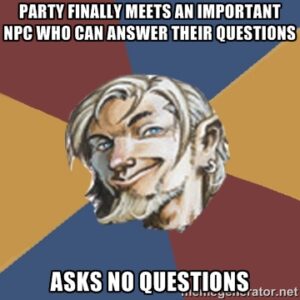For many Dungeon Masters, combat encounters can become a monotonous slog. Players roll dice, monsters lose hit points, and the cycle repeats. But what if combat could be more? What if it could be a thrilling narrative experience that leaves players engaged and eager for the next challenge?
The key lies in encounter design. By moving beyond the mechanics and embracing these strategies, DMs can transform their RPG battles into unforgettable moments:
Breathing Life into Enemies
Dump the Stat Blocks: Move away from enemies as mere collections of statistics. Imbue them with personalities! A bandit captain who taunts the party, a mercenary pleading to avoid a fight, a deranged noble offering an exorbitant sum for his defense. This creates a more dynamic and memorable foe.
The Power of Bystanders: Weave the environment with details that bring it to life. Spectators in a tavern place bets on the brawl, a cowering minion cheers on a fearsome dragon. These details create a richer atmosphere and enhance player immersion.
Making the Battlefield Sing
Environment as a Weapon: Don’t just fight on a sterile grid. Imagine goblins pelting arrows from a rain-soaked forest canopy, or a collapsing sewer threatening to drown the party. The environment itself can become a hazard, forcing players to adapt their tactics.
Objectives Beyond Bloodshed: Not every fight needs to be a battle to the death. Bugbears might be holding a hostage, a beloved friend could be compelled to fight, or territorial wildlife might be defending their young. These scenarios offer more nuanced challenges and opportunities for creative solutions.
The Art of Staging: Positioning matters! Grant your players a sense of power by letting them attack from a superior vantage point. Oppress them with towering enemies on a high ledge. This strategic use of space adds another layer of depth to combat encounters.
Keeping Players on Their Toes
Mix it Up: Spice things up with skill checks. Imagine a rogue desperately picking a lock as water floods the room during a boss fight. Integrating skill checks keeps players engaged and adds another dimension to combat resolution.
Challenge Evolves: Don’t let difficulty stagnate. Throw curveballs! Enemies arrive mid-fight, a special ability alters the battlefield, or reinforcements flood the scene. These dynamic elements keep players constantly re-evaluating their strategies.
Goals Galore: Add objectives beyond simply defeating foes. Control strategic points for buffs, protect vulnerable NPCs, or disable environmental hazards. These secondary objectives create a more layered and engaging combat experience.
Combat with Consequences
Yielding is an Option: Not all battles end in victory or defeat. Allow enemies to surrender, and maybe even the party themselves! This creates a more realistic world where characters can choose to avoid unnecessary bloodshed.
Environmental Fury: Hurl environmental effects into the mix. Rain, scorching heat, or the loss of armor due to unforeseen circumstances can force players to think creatively and adapt their tactics on the fly.
The World is Your Battlefield
Dynamic Terrain: Imagine fighting on a swaying bridge over a chasm, an erupting volcano spewing molten rock, or mountains where a loud noise triggers an avalanche. Dynamic terrain adds an exciting layer of challenge and forces players to consider their positioning and movement.
Verticality is Your Friend: Don’t limit movement to a flat plane. Let agile characters leap between trees or introduce flying enemies who pose a unique aerial threat. Verticality opens up new tactical options and keeps combat fresh.
The Ripple Effect
Consequences of Conflict: Stealth doesn’t guarantee avoiding notice. Someone will hear the commotion and spread the word, potentially leading to waves of enemies responding to the disturbance.
Fleeing Foes: A fleeing enemy can warn allies, leading to ambushes or larger forces descending upon the party. This creates a sense of consequence for every fight and adds a layer of realism to the world.
Remember, It’s All About the Story
Every encounter should contribute to the narrative. Why is the fight happening? Does it make sense for the enemies to be there? Combat should enrich the story, not be a disruptive roadblock. Ensure each fight feels organic and connected to the broader narrative.
What are some things you do to make your combat encounters more interesting? Let us know in the comments below!
Discover more from Cresthaven RPG
Subscribe to get the latest posts sent to your email.
